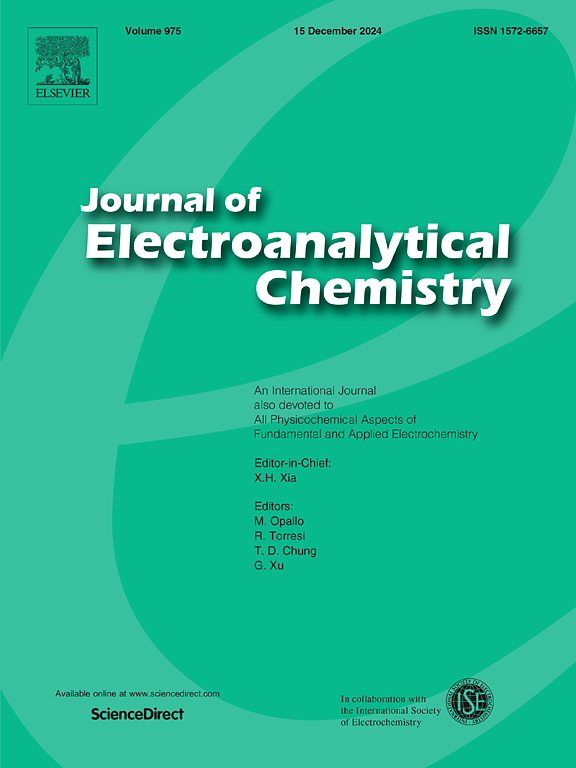Multiphysics modelling for rechargeable zinc-air flow batteries – Part I: A physico-chemical and mathematical reassessment of the model
IF 4.1
3区 化学
Q1 CHEMISTRY, ANALYTICAL
引用次数: 0
Abstract
Mathematical modelling of zinc-air flow batteries is a crucial tool for the design of prototypes and their scaleup: these are highly strategic tasks in the current development of this technology. A limited amount of efforts has been devoted to this research and, notwithstanding results of high scientific standard, often the emphasis on applications dominates the methodological one. In this work, we have first reassessed and clarified some physico-chemical complexities aspects of a standard multiphysics model for a zinc-air flow battery with a porous GDE, a metallic Zn anode and a flowing electrolyte, and extended it to the rechargeable case. The model couples: (i) material conservation for oxygen, zincates and hydroxide with (ii) electrodic electrochemistry in the porous cathode and the compact anode, (iii) charge conservation in the electronically conductive region of the GDE and in the electrolyte, (iv) fluid dynamics for both gas and electrolyte. Then, we have employed the model to: (i) predict polarization curves as a function of operating conditions; (ii) map the limiting current density distribution over the Zn anode during charge, as an estimate of shape change. Some of the functionally relevant computed trends are confirmed by a selection of experimental results.

可充电锌空气流电池的多物理场建模。第1部分:模型的物理化学和数学再评估
锌空气流电池的数学模型是设计原型和扩大规模的关键工具:这些都是当前该技术发展的高度战略任务。对这方面的研究投入的努力有限,尽管取得了很高的科学标准,但对应用的强调往往压倒了对方法的强调。在这项工作中,我们首先重新评估和澄清了具有多孔GDE,金属Zn阳极和流动电解质的锌-空气液流电池的标准多物理场模型的一些物理化学复杂性,并将其扩展到可充电情况。该模型耦合了:(i)氧气、锌酸盐和氢氧化物的物质守恒与(ii)多孔阴极和致密阳极中的电化学,(iii) GDE电子导电区域和电解质中的电荷守恒,(iv)气体和电解质的流体动力学。然后,我们利用该模型:(i)预测极化曲线作为操作条件的函数;(ii)在充电期间绘制锌阳极上的极限电流密度分布图,作为形状变化的估计。一些与功能相关的计算趋势通过一系列实验结果得到了证实。
本文章由计算机程序翻译,如有差异,请以英文原文为准。
求助全文
约1分钟内获得全文
求助全文
来源期刊
CiteScore
7.80
自引率
6.70%
发文量
912
审稿时长
2.4 months
期刊介绍:
The Journal of Electroanalytical Chemistry is the foremost international journal devoted to the interdisciplinary subject of electrochemistry in all its aspects, theoretical as well as applied.
Electrochemistry is a wide ranging area that is in a state of continuous evolution. Rather than compiling a long list of topics covered by the Journal, the editors would like to draw particular attention to the key issues of novelty, topicality and quality. Papers should present new and interesting electrochemical science in a way that is accessible to the reader. The presentation and discussion should be at a level that is consistent with the international status of the Journal. Reports describing the application of well-established techniques to problems that are essentially technical will not be accepted. Similarly, papers that report observations but fail to provide adequate interpretation will be rejected by the Editors. Papers dealing with technical electrochemistry should be submitted to other specialist journals unless the authors can show that their work provides substantially new insights into electrochemical processes.

 求助内容:
求助内容: 应助结果提醒方式:
应助结果提醒方式:


